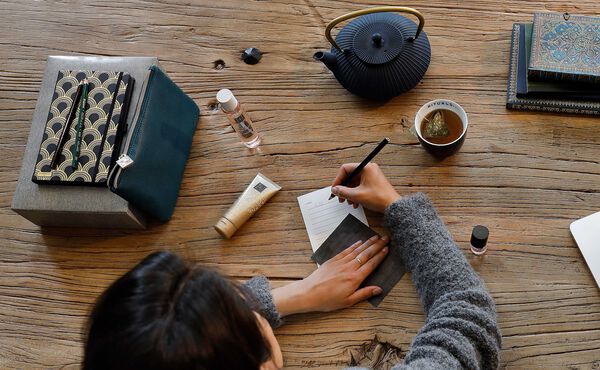Do you remember your parents dragging you to a museum, when it was the last thing you wanted to be doing? Well, your parents had actually had a good reason, because looking at art is as good for children as it is for adults.
It’s the perfect way to forget your daily worries—when you step into another world, it helps you to truly relax. You can learn a lot from it, either by giving you a different perspective on things or by helping you understand more about yourself or other people. History’s big thinkers knew it all along: without art, there is no life.
The world is a work of art and can be better understood through poetry than rational thought.
Dutch philosopher Lammer Kamphuis once wrote in his thesis, “The world is a work of art and can be better understood through poetry than rational thought.” And he couldn’t be more right. By visiting museums and expositions, watching films, reading literature and listening to music, you learn about the world and about yourself. Art helps us and our children with everyday issues, it’s relaxing, and it’s a healthy way to escape our busy lives for a while.
1. It has a therapeutic effect
Another modern philosopher, British Alain de Botton, emphasises that art can have a therapeutic effect, and together with John Armstrong he developed the book and accompanying website Art as Therapy. In the book, they present 150 different works of art that can help us with different facets of our lives, from finding happiness to maintaining good relationships to accepting our own mortality. According to Button, art can help with the big existential questions and also calm us during times of worry and stress.
2. It is bigger than yourself
Deceased German philosopher Martin Heidegger saw art differently when he said that it gives us an experience that is bigger than ourselves. Traditionally speaking, art used to be about creating a faithful representation of reality. Still lifes, landscapes and people were painted as accurately as possible, while later on, art became much more abstract. Art gives you an entirely different reality than the one you already know and can therefore make you think.
3. It helps you look at things critically
At its very core, art is a way to voice criticism of societal issues, and that can make you think as well. It teaches us about history, other cultures and countries and opens up a world that we would normally not see without art. Philosopher Albert Camus said the same thing, but then about literature. “In a novel, you can show an alternative world and art can be a form of non-violent protest.”
4. It helps you understand yourself better
Unfortunately, life doesn’t come with an instruction manual, so we have to make do with what we can learn from our parents, school and environment. And that can be a challenging proposition. The choices we must make, our problems, and the search for happiness can all be confrontational and it’s easy to feel lonely because of them. But art lets you see that you’re not alone in these feelings and can offer you comfort. It can provide ideas, offer recognition and shows us that we are all alike. Better still, art helps us with the big existential questions like, “Who am I?” and “Who do I want to be?”
5. Creating art is a great way to relax
More and more people—including ones that might not have grown up with it and have no natural ability—are discovering the benefits of creating art themselves. For example, did you know that getting in the habit of writing every day can be very good for you? It helps you stay grounded, provides you with more insight and consciousness and stimulates the creative part of your brain.
This is also the reason adult colouring books are so popular at the moment. If you try either, you’ll notice that it makes you feel happy. It helps you live more in the moment and can even positively influence your energy level and sleep.


%201.jpg?sw=600&sh=370&sm=fit&cx=0&cy=272&cw=5475&ch=3376&sfrm=jpg)

.jpg?sw=600&sh=370&sm=fit&cx=0&cy=205&cw=5585&ch=3444&sfrm=jpg)
.jpg?sw=600&sh=370&sm=fit&cx=0&cy=0&cw=600&ch=370&sfrm=jpg)
.jpg?sw=600&sh=370&sm=fit&cx=505&cy=0&cw=722&ch=445&sfrm=jpg)
